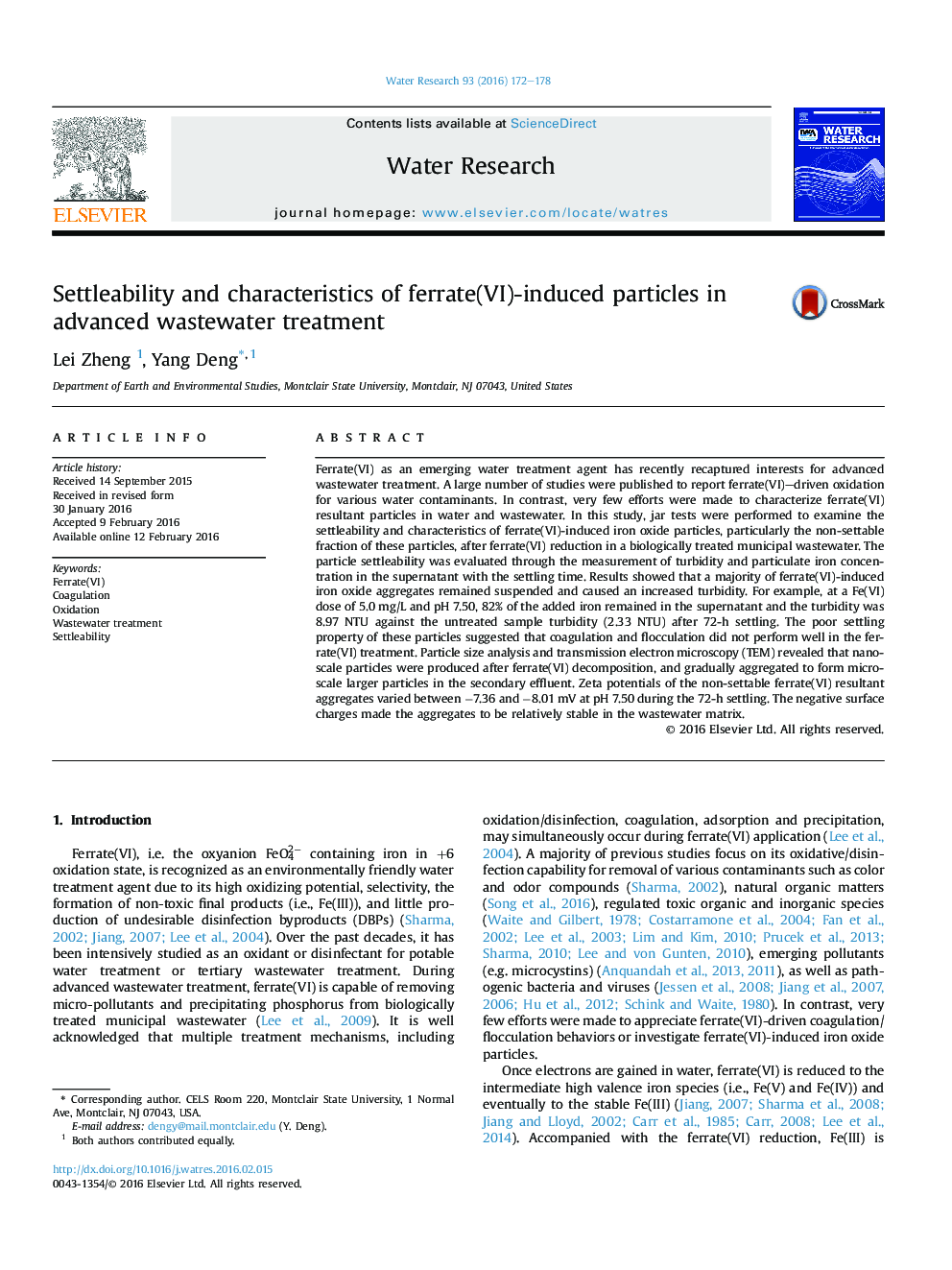| کد مقاله | کد نشریه | سال انتشار | مقاله انگلیسی | نسخه تمام متن |
|---|---|---|---|---|
| 4480947 | 1623075 | 2016 | 7 صفحه PDF | دانلود رایگان |
• Fe(VI) decay in secondary effluent produced nanoparticles that gradually aggregated.
• Most of Fe(VI)-induced aggregates remained suspended, increasing the turbidity.
• Fe(VI)-induced particles had a poor settleability in secondary effluent.
Ferrate(VI) as an emerging water treatment agent has recently recaptured interests for advanced wastewater treatment. A large number of studies were published to report ferrate(VI)–driven oxidation for various water contaminants. In contrast, very few efforts were made to characterize ferrate(VI) resultant particles in water and wastewater. In this study, jar tests were performed to examine the settleability and characteristics of ferrate(VI)-induced iron oxide particles, particularly the non-settable fraction of these particles, after ferrate(VI) reduction in a biologically treated municipal wastewater. The particle settleability was evaluated through the measurement of turbidity and particulate iron concentration in the supernatant with the settling time. Results showed that a majority of ferrate(VI)-induced iron oxide aggregates remained suspended and caused an increased turbidity. For example, at a Fe(VI) dose of 5.0 mg/L and pH 7.50, 82% of the added iron remained in the supernatant and the turbidity was 8.97 NTU against the untreated sample turbidity (2.33 NTU) after 72-h settling. The poor settling property of these particles suggested that coagulation and flocculation did not perform well in the ferrate(VI) treatment. Particle size analysis and transmission electron microscopy (TEM) revealed that nano-scale particles were produced after ferrate(VI) decomposition, and gradually aggregated to form micro-scale larger particles in the secondary effluent. Zeta potentials of the non-settable ferrate(VI) resultant aggregates varied between −7.36 and −8.01 mV at pH 7.50 during the 72-h settling. The negative surface charges made the aggregates to be relatively stable in the wastewater matrix.
Figure optionsDownload high-quality image (307 K)Download as PowerPoint slide
Journal: Water Research - Volume 93, 15 April 2016, Pages 172–178
